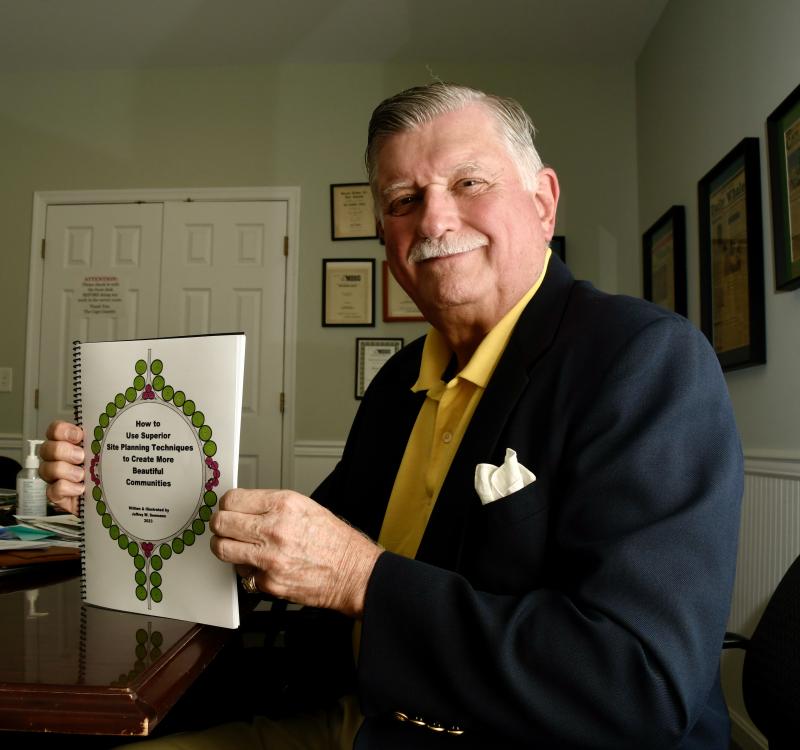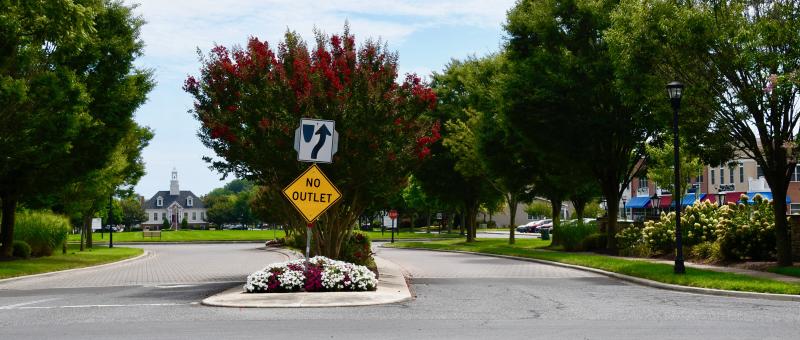Retired land planner pens book on superior design
Jeff Seemans of Milton is supposed to be retired, enjoying the Cape Region lifestyle. Instead, he has cast himself in the middle of the Sussex County land-use process by writing a booklet titled, “How to Use Superior Site Planning Techniques to Create More Beautiful Communities.”
While the booklet will not become a bestseller, he is hoping his ideas will be considered as Sussex County Council and the Sussex County Planning & Zoning Commission plan a joint workshop to discuss subdivision regulations.
Officials plan to discuss open space, buffers, forest preservation, superior design and other cluster subdivision standards. The workshop is scheduled for Thursday, Sept. 21, with the time to be posted.
Seemans is banking on his experience of more than 40 years as a landscape architect, which included working in the New Castle County Department of Planning. He's presented the book to the Sussex County Planning & Zoning Department.
He worked for Blenheim Homes from 1994-2015 designing communities from a blank canvas to construction, including master-planned communities of Village of Bayberry in Middletown, Breenan Estates in Bear and Limestone Hills in northern New Castle County. Bay Crossing off Route 1 near Midway is also a Bleinheim project.
“I would get submitted site plans and was asked to look for better ways to create more open space and save more trees. I could redo the site plans and we would ask the developer to consider the changes,” he said.
He's also worked as a land planner for Karins & Associates and Hillcrest Associates in New Castle County.
In harmony with nature
In his introduction, Seemans writes: “This booklet does not pretend to be a comprehensive how-to when it comes to the topic of high-quality land planning. This booklet is a compilation of various site-planning techniques, which I have learned while obtaining a degree in landscape architecture, seen in a plan, visited in person, or used. I also consider them to be superior, and they will help make residential communities in Sussex County [and elsewhere] more livable and more beautiful.”
The booklet includes several pro-environment techniques such as forest preservation and the use of infiltration or bio-swales, with examples of high-quality techniques used in land planning for residential communities, which would make the communities “more livable, beautiful where people can live in harmony with nature and our environment.”
Cluster option questions
“Over the last four years, an unprecedented amount of land in Sussex County is being consumed and a large amount of traffic is being created,” he said.
Seemans, along with many other residents, has questioned the county's superior-design standards. “How can it be superior design when developers or property owners are permitted to clear-cut hundreds of acres of forests?” he asked. “This is an important issue in the definition of superior. You can't have it both ways, destroying the environment and saying the design is superior.”
He also questions some of the standards in the cluster subdivision ordinance.
The cluster option, which nearly all developers use, allows for smaller lots of 7,500 square feet instead of the 20,000 square feet in standard subdivisions. Developers then must follow superior-design elements in county code, which include 30% of acreage devoted to contiguous open space.
“It's next to impossible to preserve trees on lots as small as that,” he said.
Seemans said if a developer is given the benefit of 75-foot-by-100-foot lots, then they should give something back, and that should be forest.
Open-space regulations
“We need higher-quality open space,” he said.
Seemans said stormwater ponds, which are counted as open space, are not always the best alternative.
“The natural features of a parcel need to be preserved. Bio-filtration instead of ponds allows open space to be used to preserve trees. People love wooded lots, and they can be sold at a premium instead of lots backing up to mowed grass,” he said.
“More meadows, fields of wildflowers and wooded parcels are low-maintenance, passive recreation areas. They also help HOAs to reduce grass-mowing fees. They add value and curb appeal, which is not the case with acres and acres of mowed grass,” he added.
Improved entrances
Another site-planning technique Seemans is a proponent of is improved entrances to subdivisions, which includes moving lots as far away as possible from roads. He said in many subdivisions, long rows of houses back up against roads leading to entrances. “They are too close and owners have to deal with noise, exhaust and headlights,” he said, adding Paynter's Mill on Cave Neck Road is a good example of the way to construct an entrance.
End to clear-cutting
“Preserving what trees and other natural areas that remain, and creating new ones, will help ameliorate our climate until we can reduce our dependence on fossil fuels,” he said. “Only together can we create a future that is better than the current trend of clear-cutting forest to build more housing. As subdivision and zoning regulations get scrutinized with a collective eye toward improving them, hopefully this booklet will help by showing what helps make a high-quality, superior-designed community, and what does not.”
For more information on obtaining a booklet, contact him at jeffseemans@gmail.com.
Among Seemans' suggestions are:
• Lots farther away from public highways
• Clubhouses in a visually prominent location
• Traffic circles as part of an entrance
• Wide medians to enhance an entrance
• Open space between the backs of lots and roadways
• Interior neighborhood greens
• Preservation of existing forests to create lot premiums
• Enhance cul-de-sacs with landscaped circles
• Maximize curved streets; minimize straight streets
• A variety of housing types if zoning regulations permit
• Infiltration swales as alternatives to stormwater retention ponds
• Central greens in between houses
























































